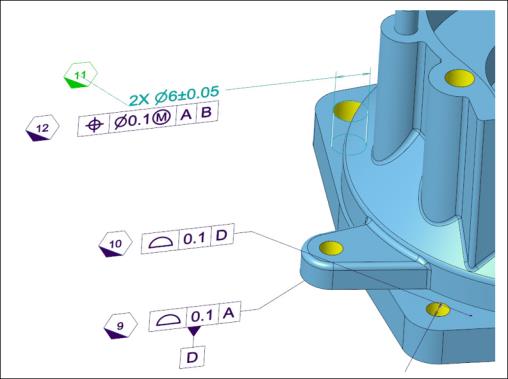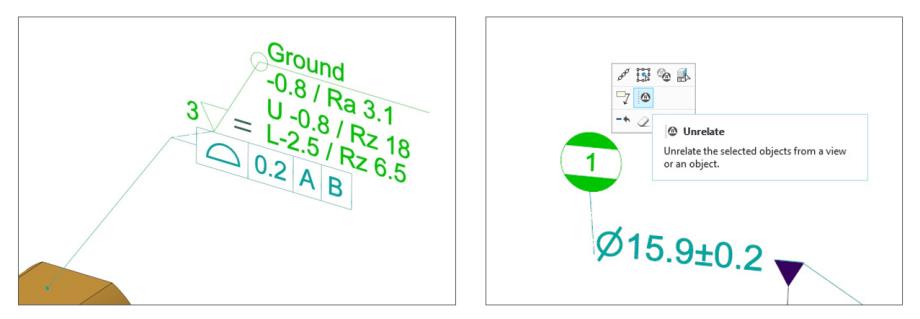Relating Symbols and Surface Finish Annotations to other Annotations in Model-Based Definition
Creo Parametric 10.0.0.0


Videos
Description
Previously, there was no easy way to relate symbols or surface finish annotations to other annotations in Model-Based Definition (MBD), and this type of placement was manual, non-associative, and not persistent when the parent annotation was moved. This enhancement introduces a new placement option for symbols and surface finish annotations that enables you to relate a symbol or surface finish annotation to other annotations in 3D models.
The new placement type has the following capabilities:
• Ability to relate the offset placement symbols and surface finish to other annotations in MBD.
• Ability of the related symbol or surface finish to inherit the same annotation plane as the parent annotation.
• Ability to behave as a group or stack for related annotations (mutual movement, assignments to combination states, and so on).
• Ability to highlight a parent annotation when a related symbol or surface finish is selected or vice versa.
• Ability to relate multiple symbols or surface finishes to a single parent annotation.
• Ability to unrelate a related symbol or surface finish from a parent annotation
Benefits
The benefits of this enhancement are:
• Easy and robust placement type for relating symbols and surface finishes to other annotations in MBD.
• New Model-Based Definition and Model-Based Enterprise workflows for inspection planning, tracking, and other use cases.
• Additional placement options for surface finish annotations that improve compliance to the detail drawing standards.
Additional Information
Tips: | None. |
Limitations: | Relating a symbol or surface finish capability is not supported in the following use cases: • For datum feature symbol annotations. • For relating another symbol or surface finish to a child annotation that is already related to a parent annotation. |
Does this replace existing functionality? | No. |
Configuration option associated with this functionality: | None. |